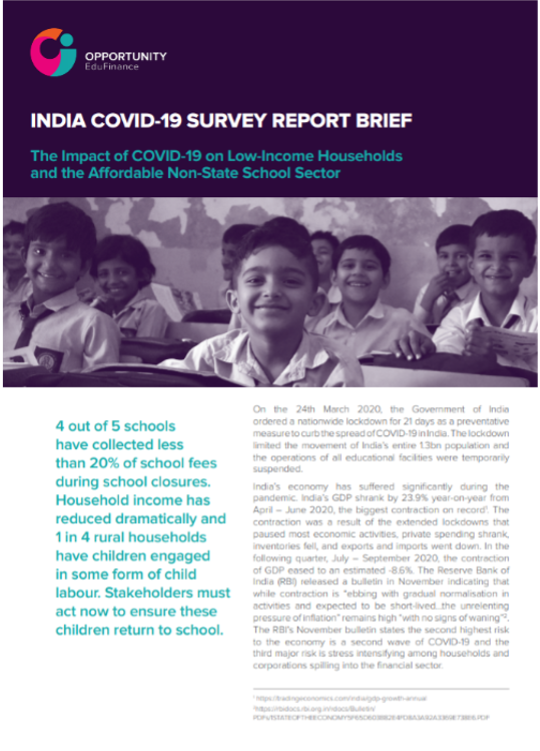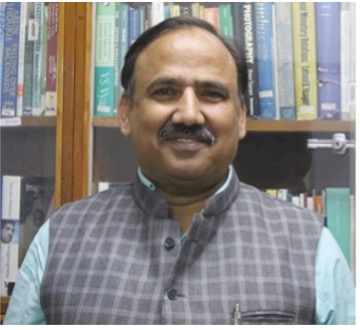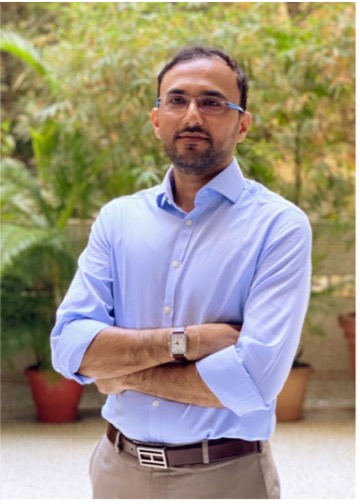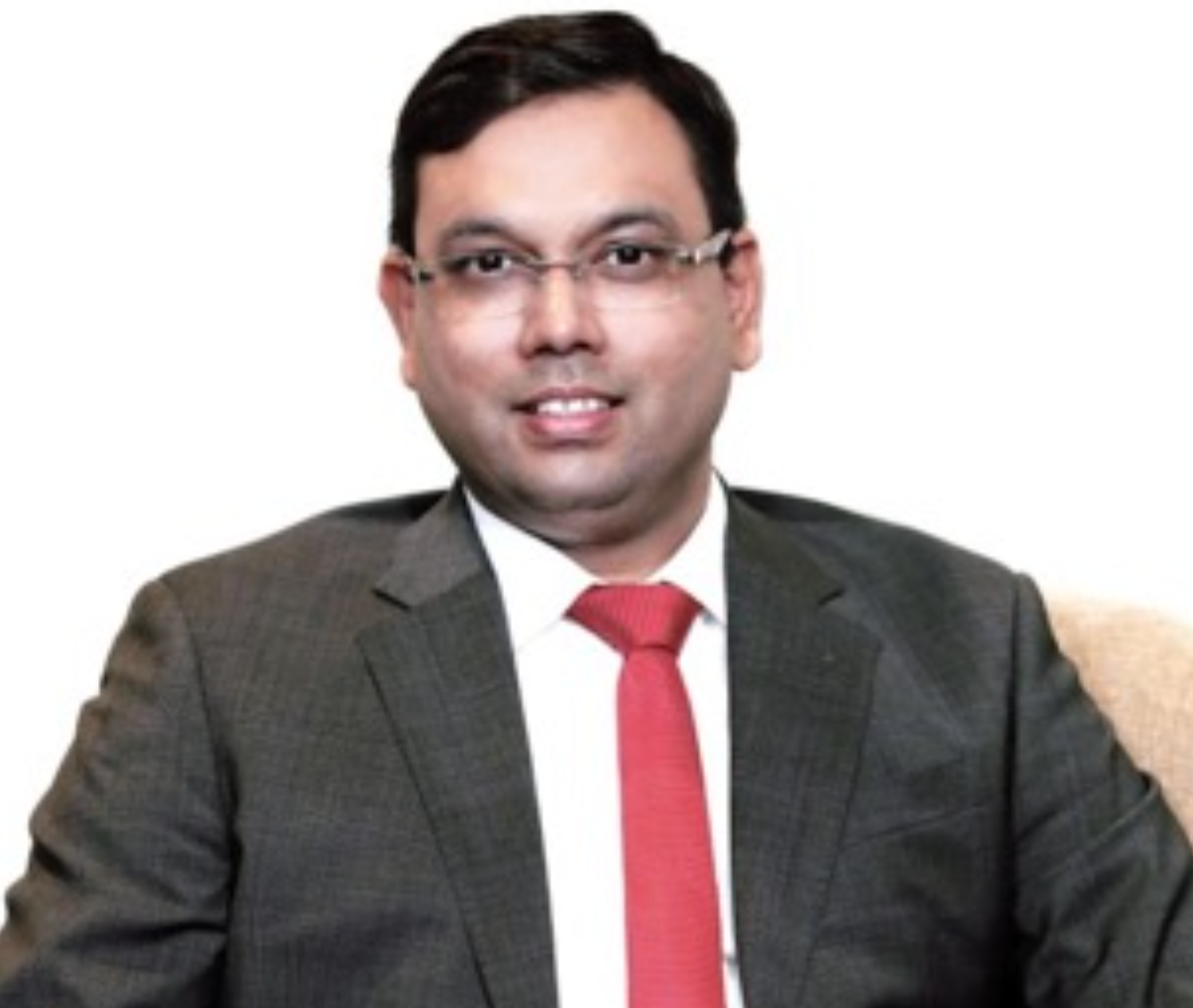Resilience & Recovery in India: Reflecting on the impact of Covid-19 for non-state schools & the Indian microfinance sector
The fallout from the pandemic has impacted every one of us. And yet, as numerous studies have shown, the impact has been much higher in rural households due to panic migration and skyrocketing unemployment. Similarly, many affordable non-state schools ultimately risk permanent closure, with 4 out of 5 schools having collected less than 20% of school fees since schools had closed.
panic migration and skyrocketing unemployment. Similarly, many affordable non-state schools ultimately risk permanent closure, with 4 out of 5 schools having collected less than 20% of school fees since schools had closed.
To assess how rural households - the typical clients of microfinance institutions – and schools were affected during the pandemic, the EduFinance Technical Assistance team carried out a detailed series of surveys starting in October 2020. In total, the team surveyed 2,088 parents from rural households and 442 affordable non-state school leaders. The key findings of the research are highlighted in this recent blog and further detailed in the report.
To follow-up on initial report findings, Opportunity EduFinance conducted further in-depth interviews with industry stakeholders in the non-state school sector and microfinance sector in India to discuss opportunities for recovery and transformation as we enter 2021 and India’s economy continues to open up.
_________________________________________________________________________
2020 was a challenging year for all sectors, and especially for education. We saw schools temporarily close worldwide and school fee collection drop. Across EduFinance’s global financial institution partners, we also saw a drop in the financing of schools.
As schools begin to reopen, have you seen a change in demand for financial services?
Sandeep Wirkhare, Managing Director & CEO Indian School Finance Company (ISFC)
This pandemic has undoubtedly created financial pressure on schools, teachers as well as parents; given that the livelihoods of a large number of people have suffered either due to working capital crisis, salaries not coming in, businesses not earning or closing. Since January onwards, positive momentum has started to build up in the loan demands across the education ecosystem. We have restarted Personal Loans to Teachers, Top ups for Institutional funding, and are soon launching a student fee discounting product for parents.
We have tightened our seatbelts and are fully geared up to extend loans to all vectors of the education industry. Customers with good credit behaviour will always be entertained. We foresee huge scope, considering there’s a vacuum between the credit available and the demand in this space. To leave no questions, ISFC is bullish on lending to the education segment as a whole.
Dr. Kulbhushan Sharma, President National Independent Schools Association (NISA)
National Independent Schools Alliance (NISA) conducted a similar survey among the schools in its network to assess the impact of the pandemic on schools’ financial sustainability and found the data indicated an alarming situation. This survey was conducted in 3,690 schools with a total enrolment of 16,58,367 students across 22 states. During of the lockdown from April to June, only 38% of students had paid the school fee. Because of not receiving fees, the learning loss is very high, and many teachers became jobless.
In 2021, we are starting to see a big shift in the education system. However, reopening schools will not bring a complete solution to the school owner. In addition to teaching and learning, the school owner has to also focus on three important aspects: child safety, teacher empowerment and parental engagement. These three things need financial support. There is no doubt that there will be an increased demand for finance, but schools will also need support and easy processes to access funding.
While financial institutions are pivoting in crisis response mode, what would be your advice to their management on business continuity planning?
Ragini Bajaj Chaudhary, Director Strategic Initiatives Caspian Impact
Any financial institution that has been around for more than ten years in India would have seen three or four crises by now. The 2010 Microcredit crisis, demonetisation in 2017 and regional crises, like the recently passed Microfinance Institutions Bill in Assam. Crises happen in pockets every one or two years. This one, however, will have the most far-reaching impact. Institutions will need to learn to be more creative and innovative. The challenge is to find the community connection that microfinance boasts of and align it with the efficiency of digital.
Sadaf Sayeed, CEO Muthoot Microfin
In the past, microfinance has been at the forefront of providing assistance and capital to restart businesses whenever there was a crisis, often in the form of emergency loans. The rural economy, which is the core area of operations for microfinance, is reviving and recovering fast. Microfinance companies will continue to provide support to borrowers.
The only change I see would be more use of digital technology to reach and service clients. We are already seeing that 100% of disbursements can be done in a cashless manner, and soon most recovery will also become cashless. So when we speak about pivoting, this would be using technology to interact with the customers in the era of social distancing.
Our research shows that over 85% of the respondents across all regions had reduced income during Covid-19. Beyond the short-term impact, what do you see as the longer-term impact on the microfinance sector and non-state schools?
Nirav Khambhati, Managing Partner Kaizenvest
Even in the short term, what people seem to be missing is that we have a billion plus children that have missed out on a year of learning, so what happens when they move on to the next grade? What is the plan to make up for the deficit? This is extremely important; otherwise, we are staring at a permanent loss of learning outcomes for generations for the next 10-12 years. This is something we need to worry about.
In terms of other impacts, we are a big believer that the demand will come back. However, the supply would have shrunk because not every affordable private school will be able to sustain these difficult times. We will be in a situation where we will have a shrunken supply with an increased demand. In the near term, there could be the possibility of a supply shortage. Your own studies at Opportunity EduFinance have shown that we need about 66 million more seats over the next five years and we’ve lost a year of adding those seats. At some point the supply side will need to catch up and capital will be needed to make that happen.
Ragini Bajaj Chaudhary, Director Strategic Initiatives Caspian Impact
Overall, we need to rethink our expectations from microfinance. Microfinance took 20 years to become a completely sustainable sector with considerable investment in eco-system development, but we have become carried away with its success. There is a need to reset current expectations. The ‘elastic’ of microfinance has been stretched for a long time and now it’s time for a rethink, especially as to the role of smaller institutions.
For schools, the good news is that education is always the last expense that parents want to forgo. However, there will be a short-term impact on private schools, and especially at the lower end because a lot of migrant work force who used to send their children to these schools have gone back to their villages.
The long-term impact will be that every school will need to have some sort of digital interface. Earlier investments in digital interface or smart classes were just for show, as parents choose schools based on the physical infrastructure as a proxy for quality of education. Now, schools will actually have to use this infrastructure and train their teachers. This will require a lot of investment.
Sadaf Sayeed, CEO Muthoot Microfin
The impact of this Global Pandemic is continuing as we speak. Having said that, microfinance borrowers by nature are very resilient. In the past they have seen many events and natural calamities like floods in Kerala, Bihar, and Assam, cyclones and other events such as demonetisation, but they still continue to repay their lenders.
In the long run I see that method of credit assessment of borrowers will change as the homogeneity of the group and the concept of joint liability has been disturbed by this Covid-19 crisis. Credit assessment will be much more individualistic and will be based on individual customer’s repayment behaviour. Also, the past trends on lending to similar customers will play a role in making lending decisions. As in-person meetings do not fit with social distancing practice, a new model to reach to the customer and to service the loan will evolve.
As an investor into education, what is your advice for how impact investors can help their portfolio companies navigate the pandemic, focus on achieving impact, all while remaining sustainable?
Nirav Khambhati, Managing Partner Kaizenvest
I think there are two areas in which impact investors can play a role right now. First and foremost, is bring catalytic capital. The reason I say this is because this is a temporary issue, it’s not a systemic fundamental change for the long-term. Our view is that the dynamics of affordable private schooling are not going to dramatically change in the long-term because the underlying factors which led to students moving to affordable schools haven’t changed.
If catalytic capital can be brought in to tide over the interim period, then we can kickstart the sector and ensure that we don’t end up creating capacity crunches which will happen if some of these institutions are not able to get back on their feet.
Secondly, impact investors should take the lead in making presentation to the authorities. The sector should be treated on par with small and medium enterprises and amortisation extended not only to the end borrower, but also to the financial intermediaries. Investors should also make presentations to the education authorities. In most countries, education authorities are unsure of what to do with the non-state education sector. This is the time to take cognisance of the fact that the non-state education sector plays a very significant role in ensuring achievement of SDG4.
What do you think will be the key drivers to recovery post-pandemic and what role will your organisation play?
Dr. Kulbhushan Sharma, President National Independent Schools Association
The budget private schools’ system is in crisis and support from the government has been limited. At NISA, we started an Education Care fund campaign that supported teachers with grants and students with education tablets.
In all 22 states, the majority of schools have not yet fully opened. Many smaller schools are handing over their schools to larger schools that can afford operations and already thousands of schools have closed. In this situation, budget private schools need very strong financial support from individuals, corporates, EduFinance organizations and CSR support. Schools will need a minimum of 3-5 years to resume normal operations. This transition period needs a lot of support at the financial level and at the government level with realistic policies to support the schools.
Sandeep Wirkhare, Managing Director & CEO Indian School Finance Company (ISFC)
During economic crises, first and foremost the steering factor is money. Here, lenders are the key personnel to play a catalyst role in the revival process. As a pioneer in the affordable education segment, ISFC is devoted to extending support to its customers to help them overcome struggle.
Digitisation is another vital factor in the revival journey. According to an ISFC survey, more than two-thirds of schools are now conducting online classes, whereas only 40% were doing so up to October 2020. Smaller impediments like connectivity issue, hardware facility, and internet availability in rural areas, if addressed properly, will certainly give an overall long-term impact. It is foreseen that school owners are expected to invest more in technology. Technology employed in its true sense can create wonders.
Saibal Paul, Associate Director Sa-Dhan (Association of Community Finance Institutions)
Every time there is disruption in the market, the microfinance industry is one of the hardest hit. However, microfinance is a resilient sector. Portfolio at risk (PAR) of default, the standard indicator of any loan portfolio’s quality, has gone up across institutions, but on average we’re still seeing 90-92% average repayment rates.
There are three areas that we are working on:
Firstly, we are addressing policy. India is such a big economy that even a small tweak to policy will have an impact on a billion people.
Secondly, we are assisting with refinancing entities, especially ones under INR 50 crore (US$6.9mn). We are also talking to a number of multilateral agencies to support this industry.
The third area is capacity building. We are trying to work with the government on capacity building for financial institutions. Technology is also something we are working on because we have realised that the adoption of technology is important. For example, there may be no cases of Covid-19 in a particular village, but loan officers are banned from going there. In this case, technology can work in a big way. Unfortunately, technology is very much supply-side driven, so we are trying to work with international agencies on how we to make technology more widely available.
Sadaf Sayeed, CEO Muthoot Microfin
The key driver to a sustainable recovery post-pandemic would be to adopt a cautious approach. We should focus on essentials and avoid overburdening and over leveraging. Government will play a key role in ensuring that they create enabling environment for a smooth recovery. This may involve investment and credit dispensation from public sector banks to revive demand and create more opportunities and jobs. Of course, the vaccination will play a key role. However, the world will never be the same, people will have to accept and adopt to live in a new environment and practicing social distancing. I foresee that the post Covid-19 era would be driven by even more use of technology.
_______________________________
 Dr. Kulbhushan Sharma, President,
Dr. Kulbhushan Sharma, President,
National Independent Schools Association
Kulbhushan is president of National Independent Schools Association (NISA), a national federation of state associations of budget private schools in India. He is also president of Federation of Private Schools Associations, Haryana. He is also Haryana state president of Patriotic Forum of India and state working president of National Human Rights Protection Organisation. <https://nisaindia.org/dr-kulbhushan-sharma>
 Nirav Khambhati, Managing Partner
Nirav Khambhati, Managing Partner
Kaizenvest
Nirav is Managing Partner at Kaizenvest, an education investment firm focused on emerging Asia and Africa.
Kaizenvest manages two equity funds that have invested over USD150 million in several leading and transformative education companies that are commercial leaders in their domains and have created a tremendous positive impact on society. Kaizenvest Edu Finance is a blended finance debt facility that provides affordable credit, capacity-building networks, and incentives for learning outcomes improvement to low-fee non-state education providers.
Before joining Kaizenvest, Nirav was with the Tata Group for over 20 years in various capacities including as the Chief Executive Officer of the Group’s education ventures, Tata ClassEdge and Tata Interactive Systems. He was recognized as a Young India Leader by the British High Commission in 2013.
 Ragini Bajaj Chaudhary, Director Strategic Initiatives Caspian Impact
Ragini Bajaj Chaudhary, Director Strategic Initiatives Caspian Impact
Ragini Bajaj Chaudhary, Director Strategic Initiatives is development finance professional with more than 20 years of experience in microfinance, impact investment, and development. Prior to Caspian, Ragini served as the CEO of GMC India, where she led setting up of an 8m early-stage investment fund, an Accelerator – Calibrator for mobile ed-tech companies and initiatives for eco-system development for education.
Prior to GMC, she led the financial inclusion agenda of Poorest State Inclusive Growth (PSIG) Programme as well as its impact investment and incubation portfolio as a Private Sector Development Advisor, UK Government’s Department for International Development (DFID) India.
Prior to DFID, she has worked in Mi India (Dia Vikas Capital), EDA Rural Systems, Care India, Institute of Rural Management Anand, in various capacities specializing in, impact investment, training, rating, consulting and social performance management for microfinance, livelihoods and social enterprise space.
 Sadaf Sayeed, CEO
Sadaf Sayeed, CEO
Muthoot Microfin
Sadaf Sayeed serves as Chief Executive Officer of Muthoot Microfin Ltd. He has been associated with the Muthoot Pappachan Group for the last 10 years. He has over 17 years of experience in banking and financial services. Prior to joining Muthoot, he was associated with HDFC Bank Limited, Indiabulls Credit Services Limited, GE Countrywide Consumer Financial Services Limited, Satin Creditcare Network Limited and Spandana Sphoorty Financial Limited in credit and risk management functions.
 Saibal Paul, Associate Director
Saibal Paul, Associate Director
Sa-Dhan (Association of Community Finance Institutions)
Saibal Paul is a Packard Foundation fellow and doctorate in social finance. He is also trained in Harvard Business School. He has two decades of working experience in India and Africa in senior capacities.
As Associate Director of Sa-Dhan, he leads the team of Policy Advocacy, Capacity Building and Strategic Initiatives (Product research and development). He teaches in Universities and contributes to articles related to development finance in journals and newspapers.
 Sandeep Wirkhare, Managing Director & CEO
Sandeep Wirkhare, Managing Director & CEO
Indian School Finance Company (ISFC)
Sandeep is the MF & CEO of Indian School Finance Company. Sandeep has been a start-up specialist throughout 25 years of work experience and has spearheaded several start-up and rapid growth situations in organizations such as ICICI Bank, Reliance Capital, Dhanlaxmi Bank & Essel Finance Business Loans. Prior to joining ISFC he worked with Essel Finance as CEO & Executive Director for 4 years, then he was MD & CEO of Aryarth Housing Finance.